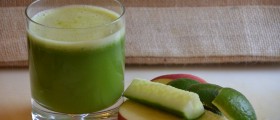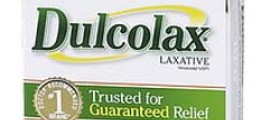Prune juice is a natural laxative and one of the most popular remedies for constipation. Unlike pharmacological laxatives, prune juice is suitable for children and it is often recommended for pregnant women, who frequently suffer from constipation. Pure prune juice can be bought in grocery stores and supermarkets, and it is also easy to make at home.
How does Prune Juice Work?
Prune juice is effective for constipation because it supplies simple sugars that help draw fluids to the intestines. The fluid makes the stool soft and hence easier to pass. Some might worry that those sugars increase the levels of blood sugar in the body, which can be dangerous, especially for people who suffer from diabetes, but this is not true because prune juice contains natural sugars like sorbitol and fructose.

This natural laxative is efficient for occasional constipation. People who suffer from chronic constipation cannot solve their problem by using prune juice alone because the chances are their colon is clogged and needs something more effective like a colon cleanse.
Aside from its laxative effect, prune juice offers other benefits as well. For example, it helps in lowering the levels of bad cholesterol, thanks to a compound that flushes LDL from the body. It is also believed that prune juice prevents breast cancer in women.
- This study included subjects aged 20–75 years who presented symptoms of treatment-naive chronic constipation. The criterion for chronic constipation was defined according to Rome IV as fewer than 3 bowel movements per week and/or hard stool defined by the Bristol Stool Form Scale (BSFS) 1 or 2, for the past 3 months, with symptom onset at least 6 months earlier.
- Subjects were randomly assigned to the prune juice group or placebo group and consumed 54 g of each test food in a day for 8 weeks. The placebo is designed to match the flavor, color, and taste of prune juice.
- Notably, BSFS 1 (hard stool) rates significantly decreased after 3 weeks, whereas BSFS 4 (normal stool) rates significantly increased after 7 weeks of prune juice intake compared with placebo.
- One issue for prune intake that should be raised is its tendency to cause diarrhea and flatulence. In our study, frequency of loose and watery stools (BSFS 5, 6, or 7) was not altered by prune juice intake.
- The prune juice used in this study contained abundant sorbitol, which has been reported to improve constipation. In addition, the prune juice contained dietary fiber, especially pectin, and polyphenols, both of which have been reported to improve constipation. Accordingly, it was supposed that the observed effects of ameliorating constipation by prune juice were mainly because of the combination of sorbitol, pectin, and polyphenol.
How to Use Prune Juice for Constipation?
Prune juice is a rather strong laxative, and its action is usually very quick, which is why it is recommended to drink it at home, where the toilet is available and free. In most cases, one glass of prune juice on an empty stomach is all it takes to have a bowel movement. Some caution is, however, necessary. Drinking a lot of prune juice can cause diarrhea and other gastrointestinal problems.
This juice works great if combined with apple juice. It is recommended to have a glass or two of prune juice first thing in the morning, then one glass of apple juice after half an hour, and another glass of apple juice an hour later.
Another great remedy combines eight ounces of oat milk and three ounces of prune juice, or a 50-50 mix, depending on the personal taste.
Prune juice can be combined with apple sauce and unprocessed bran in equal amounts. The ingredients should be mixed until the consistency is firm, and the remedy should then be refrigerated. One or two spoons of this a day, with plenty of water, will take care of chronic constipation problems.

















Your thoughts on this
Loading...